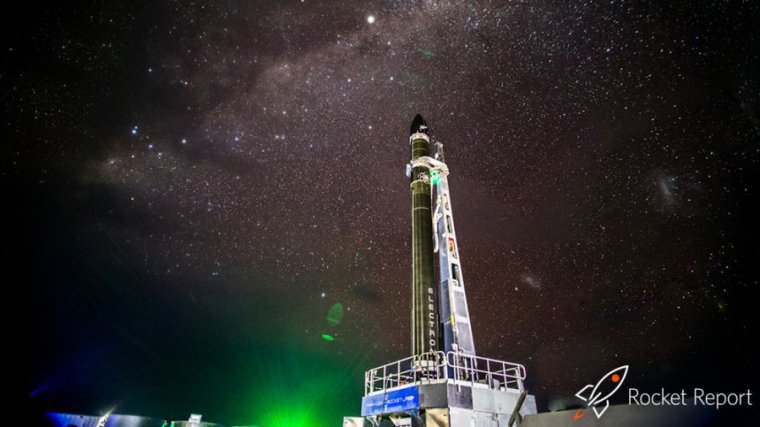
Welcome to Edition 1.23 of the Rocket Report! Lots of news from small launchers this week as Vector, Relativity, and Virgin Orbit all make moves intended to bring them closer to launch. SpaceX also had a good week, with a contract for yet another Falcon Heavy launch and a likely third flight of the same Falcon 9 booster coming soon.
As always, we welcome reader submissions, and if you don’t want to miss an issue, please subscribe using the box below (the form will not appear on AMP-enabled versions of the site). Each report will include information on small-, medium-, and heavy-lift rockets as well as a quick look ahead at the next three launches on the calendar.
Vector raises an additional $70 million. The small launcher company raised the money in Series B financing and will use the funding to expand sales and marketing teams while building a new rocket-manufacturing facility, SpaceNews reports. As part of the announcement, Vector said the new funding will help the company achieve its ultimate goal of an eventual initial public offering.
Seeking dominance … “Vector is entering an extremely important phase of our journey, transitioning from a focus on research and development to flight operations and profitability,” CEO Jim Cantrell said in a news release. This Series B financing is a critical element in Vector’s mission to improve access to space and become a dominant launch provider to the small-satellite industry.” We’re eager to see whether Vector meets its goal of launching into space this year. (submitted by Ken the Bin)
Relativity hires senior Tesla manager. The 3D-printing rocket company has hired Tobias Duschl, who worked for the last six years as senior director of global business operations for electric-vehicle company Tesla, to run operations. He will fill this post as Relativity transitions from development to commercial spaceflight operations over the next three to four years.
Helping to automate … During his time at Tesla, Duschl said he helped the company expand to around 200 sites globally, managed hiring, helped support the mass market roll-out of products, served varying customer needs, and assisted with the development of standardized processes that helped automate part of the automobile manufacturing process. “All of this translates very directly into the scaling we’re looking to execute from Relativity,” Duschl said.
Virgin Orbit puts a rocket under a wing. On Wednesday, Virgin Orbit released photos of its LauncherOne rocket tucked beneath the wing of a modified 747 that’s been christened “Cosmic Girl.” The fit checks suggest that Virgin Orbit is finally getting close to starting captive-carry tests, with rocket drop tests following soon afterward, Geek Wire reports.
Eagerly awaiting flight … It was the first time that Virgin moved a complete LauncherOne rocket out onto an airport—Long Beach Airport, in this case—and attached it to the aircraft. The photos of a rocket beneath a plane, just sitting there, are pretty cool. We can’t wait to see both vehicles in flight. (submitted by Ken the Bin)
DOE has a new sounding rocket program. Sandia National Laboratories developed a new program called the High Operational Tempo Sounding Rocket Program, or HOT SHOT and launched the first rocket earlier this year from its Kauai Test Facility in Hawaii. The program was created to launch inexpensive sounding rockets carrying scientific experiments and prototypes of missile technology.
OK to fail … It isn’t all that easy for ground tests to determine whether missile components can function in the intense turbulence, heat, and vibration a missile experiences in flight. The new program will not eliminate DOD flight tests, but the simple, two-stage sounding rockets built from surplus inventory motors should cost considerably less than military tests, which can cost tens of millions of dollars to fly. Lower-cost test flights should allow for more creativity and innovation.
Pegasus launch of NASA satellite delayed again. The ICON satellite was initially set to launch in December 2017, but it was delayed due to problems with the air-launched Pegasus rocket. More recently, it was due to launch early in the morning of October 26 from a carrier airplane that would take off from Cape Canaveral Air Force Station in Florida. But now that launch has been delayed as well, Space.com reports.
No new launch date … “NASA and Northrop Grumman have delayed the launch of the agency’s Ionospheric Connection Explorer, or ICON, to conduct further pre-launch testing on the rocket,” NASA officials said in a statement. “Upon completion of the testing, a new launch date will be established.” This seems sub-optimal for both NASA and the future of the Pegasus launcher. (submitted by Unrulycow and Ken the Bin)
Australia eyeing launch sites. Both the Northern Territory and Queensland states of Australia are looking at hosting possible launch facilities. “Given that we [Queensland] are on the east coast and Northern Territory is obviously in a different geographic position, there would be the opportunity to use each of those sites for different sorts of launches,” Denise Johnston, from the Department of State Development, Manufacturing, Infrastructure and Planning, told the Brisbane Times.
But there’s a catch … The discussion of launch sites comes as Australia has created its own space agency. However, the state government isn’t interested in building a launch site on its own. “If industry was willing to build its own launch facility then that would be, I think, a good outcome, that industry leading and not relying on government intervention,” Johnson said. Given the multiplicity of launch sites around the world, it’s difficult to see a launch provider self-funding a site without at least some government funding. (submitted by BH)
SpaceX may launch a Falcon 9 for the third time soon. SpaceX has re-used its Falcon 9 rocket 16 times, but the company has never flown a single first stage more than twice. “We’re about to relaunch a booster for the third time, so we’re turning this into routine access to space,” the company’s senior director of government sales, Lars Hoffman, said Wednesday. In this case, “about to” may mean next month.
Third time’s a charm? … The company has not officially confirmed its plans, but at present SpaceX intends to reuse a Falcon 9 rocket for the third time to launch a rideshare mission of dozens of small satellites for Spaceflight. This Spaceflight SSO-A mission currently has a launch date of November 19. SpaceX presently plans to launch a total of five more rockets in 2018, according to NASASpaceflight.com. (submitted by Ken the Bin)
Soyuz crewed launches are likely to resume in December. Russian officials have said that they intend to complete their investigation of the Soyuz failure by the end of October, and their report will include recommendations on how to fix the problem. Their plan involves three uncrewed Soyuz missions (one of which flew Wednesday) before flying the next ISS crew to the station in early December.
NASA is on board … On Tuesday, NASA Administrator Jim Bridenstine felt confident enough in the Russian investigation to declare that the next crewed Soyuz launch will occur in December. “We’re fully anticipating” putting a crew on that rocket, he said at a meeting of the National Space Council. Investigators have a “really, really good idea” about what occurred during the errant launch earlier this month, he added. (submitted by Ken the Bin)
Ariane 6 upper-stage engine passes qualification tests. The 148th test firing of the engine had a duration of more than 15 minutes, with two boosts, according to Satnews. During the qualification campaign for the Vinci engine, engineers fired it for a cumulative time of more than 14 hours. The Vinci upper-stage engine will burn for a maximum of 15 minutes during an Ariane 6 launch.
Gearing up for flights … Early in 2019, ArianeGroup plans to assemble the first Vinci engine flight model, which will then be integrated with the upper stage of the first Ariane 6 launcher flight model. Production of components for Vinci flight engines have already begun, and the European launch company still plans for the Ariane 6 rocket to make its maiden flight in 2020.
Vulcan’s first launch delayed until 2021. United Launch Alliance now expects to perform the first launch of its next-generation Vulcan rocket in the spring of 2021, a slip of nearly a year that the company says is due to requirements of a recent Air Force award, SpaceNews reports. That initial April 2021 launch will be followed by a second in August 2021 which the company anticipates will result in military certification.
Widely expected … This was widely expected, although as recently as early October ULA chief Tory Bruno was still holding to the 2020 launch date for Vulcan. Even getting the rocket off in 2021 would be an achievement, as would a national security launch in 2022. (Which would result in Elon Musk eating his hat). (submitted by Unrulycow and Ken the Bin)
Putting all orbital launches into a single graphic. We would be remiss if we did not call attention to an infographic that recently appeared in The Economist. That graphic depicted orbital launches dating from Sputnik through the Soyuz MS-10 failure earlier this month. There is a lot of information packed into a single graphic.
Rise of commercial space … One thing the graphic artist—working with Harvard’s Jonathan McDowell—attempted to do was classify launches as provided by “state” or “commercial” launch services. This is more of an art than a science, but the illustrator nonetheless shows the rise of private companies and decline of state providers over the last decade or two. (submitted by David)
Falcon Heavy a hit with satellite operators. Last week, the Swedish satellite company Ovzon signed a deal for a Falcon Heavy launch as early as late 2020 for a geostationary satellite mission. And just on Thursday, ViaSat announced that it, too, had chosen the Falcon Heavy to launch one of its future ViaSat-3 satellite missions in the 2020 to 2022 time frame. “Their proven technology is both powerful and efficient enough to thrust a ViaSat-3 spacecraft close to geostationary orbit,” Dave Ryan, president of space systems at ViaSat, said.
A shrewd move … Back in February, SpaceX got a fair amount of pushback for launching the “frivolous” payload of a Tesla Roadster into an orbit that would bring it near Mars. However, the key thing about that launch was not so much the payload but the mission profile itself. During that flight, the Falcon Heavy demonstrated the capability to send payloads directly to geostationary orbit by firing its second stage after a six-hour coast. The company performed this maneuver for the US military, but commercial satellite operators seem to have also noticed.
























